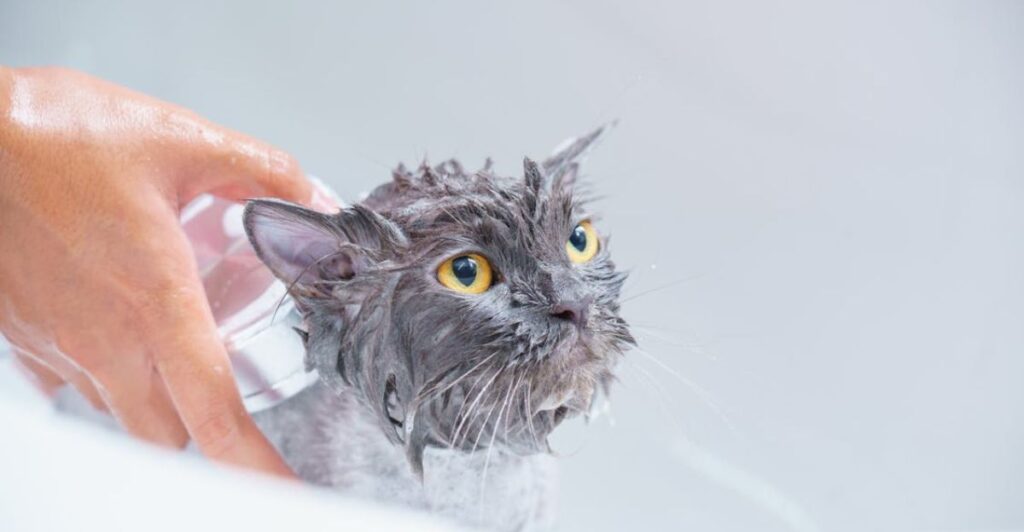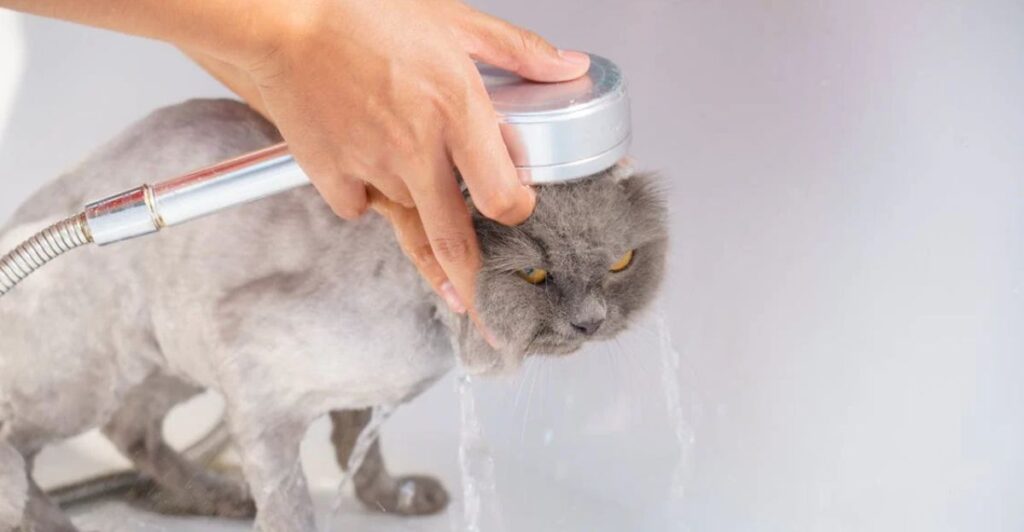
Bathing a cat can seem like an impossible task, but it doesn’t have to be a stressful experience. With the right approach, you can convert bath time into a more manageable and even enjoyable routine for both you and your cat. So, here are 12 essential tips that will help your cat stay calm.
1. Start With a Calm Environment

A soothing environment sets the tone for a stress-free bath. Your cat is keenly attuned to your emotions, so stay calm. If you’re anxious, your cat will pick up on that. Dim the lights, minimize noise, and use soft, soothing music. A relaxed atmosphere can make a great difference for both of you.
2. Desensitize Your Cat Before Bathing

Let your cat explore the bathing area before you even think about water. Place your cat in the bathroom with no water running and allow them to sniff around. Gradually, they’ll begin associating the room with something less intimidating. This gentle introduction can drastically reduce their fear when bath day finally arrives.
3. Use Cat-Specific Shampoo

Only use products made for cats. Human shampoos can irritate their sensitive skin, causing dryness or allergic reactions. A mild, hypoallergenic cat shampoo keeps your feline comfortable while maintaining their coat’s shine and health, making bath time a positive experience.
4. Prepare Your Tools in Advance

Preparation is key to a smooth bath experience. Gather everything before bringing your cat near the water—shampoo, towels, a cup for rinsing, and a brush. Not having to scramble for supplies during the bath reduces stress and makes the process faster and more efficient.
5. Use Positive Reinforcement

Reward your cat after each bath with a favorite treat or a few extra minutes of playtime. Positive reinforcement helps them associate bath time with something enjoyable. Over time, your cat will start seeing bath time less as a dreaded event and more as a small part of their day, followed by rewards.
6. Keep Water Temperature Comfortable

Water that’s too hot or cold will stress your cat out. Lukewarm water is ideal—it’s comforting and won’t startle them. Cats are more sensitive to temperature than humans, so ensure it’s just right. Test the water on your wrist before using it to avoid any surprises that might upset your cat.
7. Use a Non-Slip Surface

To help your cat feel more secure in the tub, use a non-slip mat or towel at the bottom. Cats are prone to slipping, which can add to their stress. By providing stable footing, you reduce the risk of them panicking. A stable surface allows your cat to relax without worrying about losing balance.
8. Talk to Your Cat Calmly

Speak in a gentle, reassuring voice during the bath. Cats are highly responsive to tone and familiar sounds. Your calm, soothing voice can reassure them that everything is okay. Even if your cat is still anxious, your calm presence will help create a more comforting environment during their bath.
9. Try Shorter Baths at First

Start with quick, less intense baths, focusing on cleaning just a small area of your cat’s body at a time. The first bath should never feel like a lengthy ordeal. Keep it brief and simple, allowing your cat to get used to the process. Gradual exposure ensures bath time won’t feel overwhelming to them.
10. Avoid Getting Water in Their Ears

Cats are incredibly sensitive about their ears. During bath time, avoid getting water in them, as it can cause irritation or even infections. Try using a soft, damp cloth to carefully wipe around the ears instead. Keeping them dry ensures a more comfortable and stress-free bath for your cat.
11. Consider Using a Cat Bathing Helper

If your cat is particularly squirmy or anxious, consider using a bathing bag designed for cats. These bags allow you to keep your cat secure while still giving them the freedom to move their head and legs. It’s a helpful tool for owners of cats that might struggle with remaining still during bath time.
12. Make Bath Time a Routine

Making bath time part of your regular cat care routine can help them grow accustomed to it. The more often your cat experiences a calm, low-stress bath, the less fearful they’ll become. Start with simple grooming activities like brushing, and gradually work your way up to full baths.
Stay connected with us for more stories like this! Follow us to get the latest updates or hit the Follow button at the top of this article, and let us know what you think by leaving your feedback below. We’d love to hear from you!







